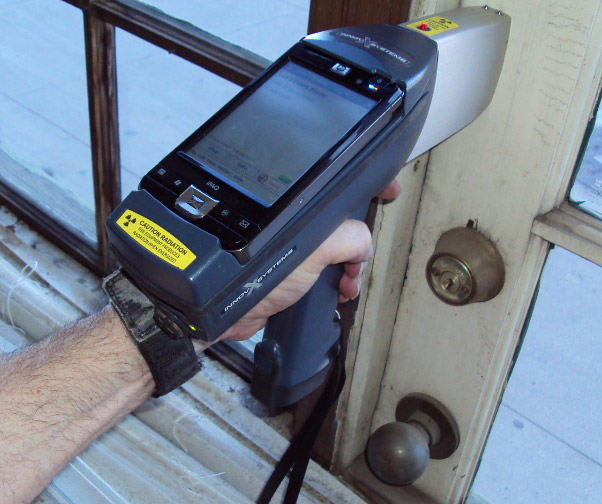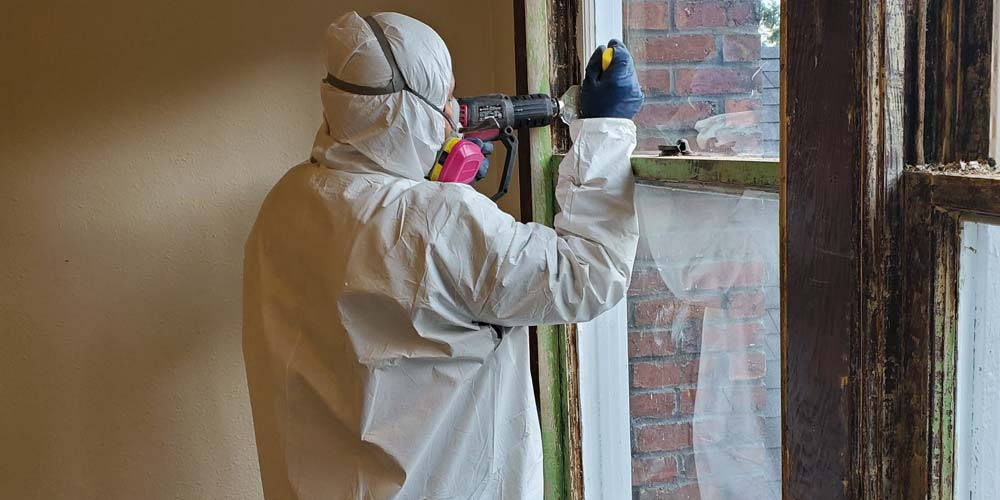Finest Practices for Making Certain Safe and Complete Lead Violation Abatement
Resolving lead violation reduction calls for a multi-faceted technique to make sure both safety and compliance. First assessments using sophisticated discovery methods such as XRF analyzers set the phase for a specific understanding of contamination levels. Integrating correct control techniques, including closed obstacles and HEPA filtration, combined with making use of individual safety equipment (PPE) for workers, develops the backbone of a safe procedure. Meticulous clean-up procedures, including HEPA vacuuming and wet-wiping, are critical. Yet, it's the final clearance process, involving extensive examinations and research laboratory screening, that absolutely validates a lead-free atmosphere, making certain lasting safety and security. Exactly how do these methods interconnect to guarantee comprehensive lead abatement?

Initial Analysis
Carrying out an initial analysis is an important initial step in lead infraction abatement. This stage encompasses a thorough examination of the home to identify the presence, level, and particular areas of lead-based dangers. Qualified specialists, such as certified lead examiners or risk assessors, must perform a detailed site assessment, utilizing devices like X-ray fluorescence (XRF) analyzers to accurately find and measure lead concentrations in paint, dirt, soil, and water.
The evaluation has to also consist of a review of the structure's history, previous reports, and any type of complaints or wellness problems reported by passengers - Lead Removal Contractors. Documenting the findings diligently is crucial, as these documents form the basis for establishing an effective reduction technique. An extensive analysis likewise entails tasting and lab evaluation, which are critical to validate the existence of lead and overview succeeding activities
In addition, it is essential to interact the outcomes transparently to all stakeholders, consisting of residential or commercial property owners, occupants, and governing authorities. By ensuring that the initial analysis is performed with accuracy and roughness, professionals can lay a solid structure for a targeted and reliable lead reduction procedure, inevitably guarding public health and ensuring compliance with regulatory standards.
Proper Containment
Correct containment is essential to prevent the spread of lead pollutants throughout reduction tasks. Effectively managing control lessens the danger of lead dust and particles moving to non-work areas, consequently protecting both the environment and individuals outside the prompt work area.

Normal evaluations of the control area are essential to look for violations or weaknesses in the obstacle. Any recognized issues must be quickly resolved to maintain the stability of the control. By adhering to these methods, reduction projects can successfully control lead contamination and alleviate affiliated health and wellness threats.
Worker Security
Making certain worker security is extremely important during lead abatement jobs to avoid work direct exposure to unsafe lead particles. Necessary measures include the use of individual safety equipment (PPE) such as respirators, gloves, and full-body fits particularly made to obstruct lead dust and fumes. Workers should go through thorough training webpage on the proper my response usage and maintenance of PPE, consisting of healthy testing for respirators to make sure optimum efficiency.
Engineering controls, such as regional exhaust air flow systems, are crucial in reducing airborne lead concentrations in the workplace. Administrative controls must likewise be carried out, consisting of restricting the duration of exposure and rotating employees to reduce individual direct exposure times. Normal clinical security and organic surveillance are crucial for very early discovery of lead absorption, enabling timely intervention and therapy.
In addition, developing a purification method is crucial. Employees need to comply with strict decontamination treatments prior to breaks and at the end of their shift to avoid lead dust from being lugged outside the workplace. This consists of comprehensive hand and face cleaning with lead-specific cleansing representatives and altering out of infected clothes.
Precise Cleaning
Keeping a risk-free workplace prolongs beyond worker defense and incorporates careful cleanup to ensure lead fragments are completely removed from the site. The process of meticulous clean-up is vital in avoiding the recontamination of the abated location and protecting both existing and future passengers.
To achieve a thorough cleanup, all workspace need to be systematically sanitized. This involves making use of specialized HEPA (High-Efficiency Particulate Air) vacuum cleansers and wet-wiping techniques to catch and remove fine lead dirt that may have decided on surfaces. It is necessary to cleanse all horizontal surfaces, consisting of floors, window sills, and counter tops, as well as vertical surface areas that may have caught lead fragments.
Workers should wear appropriate personal protective equipment (PPE) throughout cleanup to stay clear of direct exposure to residual lead dust. Utilized cleaning products such as wipes, sponges, and mop heads should be taken care of in conformity with contaminated materials disposal laws.

Final Clearance
Final clearance is the vital ending phase of lead abatement that figures out whether the website is safe for reoccupation. This vital action entails extensive assessment and screening to validate that all lead hazards have been successfully removed. The procedure starts with an aesthetic inspection by a certified lead-based paint examiner or danger assessor to make sure no noticeable dirt or debris stays. This is complied with by accumulating dust clean examples from numerous surface areas, consisting of floorings, windowsills, and various other straight surface areas. Lead Removal Contractors.

Final clearance testing not Resources only protects future owners however also ensures conformity with regional, state, and government guidelines. Additionally, it serves as a recorded validation of the reduction specialist's adherence to industry ideal methods. Making certain an extensive and successful last clearance is essential in guarding public health and wellness and cultivating rely on the abatement procedure.
Final Thought
Ensuring risk-free and thorough lead infraction reduction requires a complex method incorporating initial evaluations with innovative detection techniques, reliable containment approaches, strict employee protection procedures, and thorough cleanup procedures. The last clearance phase, featuring thorough inspections and lab screening, is essential to verify conformity with EPA standards. Adherence to these best methods ensures a secure environment for residents, alleviates wellness risks, and supports regulative demands, therefore advertising public health and safety in lead-affected areas.